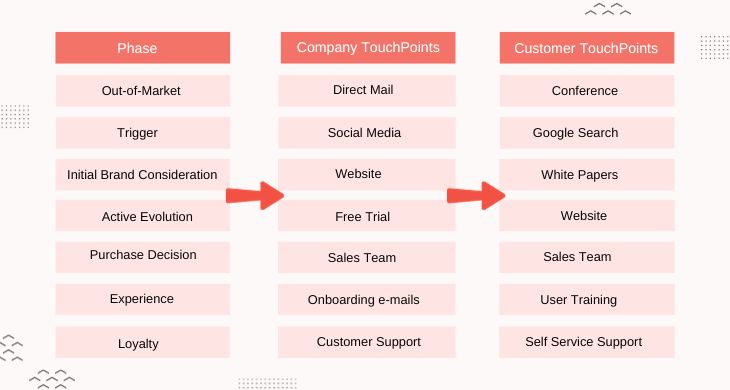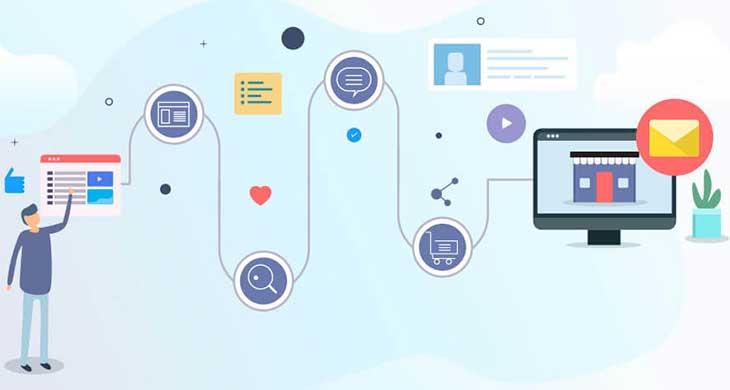In today’s fast-paced business world, providing an exceptional customer experience is not just a nice-to-have; it’s a must-have.
But let’s be clear:
“Building a good customer experience doesn’t happen by accident; it happens by design.”
As a business owner, overlooking your user journey could be costing you valuable revenue opportunities. Let’s explore the untapped potential of optimizing your user journey and how it can maximize your profits.
4 Benefits of Optimizing User Journey
- Rise Above the Rest: To stand out in a crowded market, it’s essential to embrace a marketing perspective. By understanding the value of marketing in every customer interaction, you can create meaningful connections that captivate your audience and leave a lasting impression.
- Seizing the Potential: Optimizing your user journey can be a game-changer for your business. By crafting a seamless and engaging experience, you can convert more leads into paying customers, ultimately increasing your bottom line. A well-optimized user journey not only boosts customer satisfaction but also enhances loyalty and encourages repeat business, paving the way for long-term growth.
- Elevating brand by Transforming Touchpoints: Every touchpoint with your customers is an opportunity to showcase your brand’s unique story and offerings. By aligning your marketing efforts with your user journey, you can transform ordinary touchpoints into extraordinary experiences that resonate with your audience. Don’t leave money on the table – capture missed revenue streams by optimizing your user journey.
- Gaining the Competitive Advantage: To stay ahead of the competition, prioritizing your user journey is key. By delivering exceptional experiences that exceed customer expectations, you can differentiate yourself in the market. Maximize your revenue by concentrating on your user journey and reaping the rewards of customer loyalty and increased profitability.
“As a business owner, overlooking your user journey could be costing you valuable revenue opportunities. Let’s explore the untapped potential of optimizing your user journey and how it can maximize your profits.”
Frequently asked questions we get.
What is a user journey?
A user journey is the path that a customer takes when interacting with your business, from their initial contact with your brand to the point where they complete a desired action, such as making a purchase or signing up for a service.
What is the role of marketing in the user journey?
Marketing plays a critical role in shaping and enhancing the user journey. It helps create meaningful connections with your audience, ensures that touchpoints along the journey are well-crafted and engaging, and drives customer engagement through targeted messaging and campaigns. By aligning marketing efforts with the user journey, businesses can guide customers seamlessly through the process, ultimately leading to more successful outcomes
Why designing a user journey help a business?
Designing a user journey benefits businesses by enhancing the customer experience, boosting conversion rates, and improving customer retention. It provides insights into customer behavior, offers a competitive edge, increases efficiency, and aligns with customer expectations. Satisfied customers share positive experiences, leading to word-of-mouth marketing. Additionally, it enables businesses to adapt to changing markets and technologies. Ultimately, a well-crafted user journey contributes to growth, profitability, and sustainability in today’s competitive landscape.
Why is improving customer experience valuable for businesses?
- Increased Sales: A positive customer experience directly boosts sales. Satisfied customers are more likely to make repeat purchases and recommend your brand to others, expanding your customer base and revenue.
- Enhanced Loyalty: Exceptional experiences foster customer loyalty. Loyal customers not only continue to buy but also become advocates, reducing marketing costs and providing a stable revenue stream. Overall, improving customer experience is a strategic investment that drives sales and cultivates a loyal customer base, crucial for long-term success.
To understand better here is a small chart for you to understand the correlation between the phase, your company touchpoint, and your customer touchpoint.

“If now you are convinced that User Journey mapping is something you should do immediately for your business… Keep Reading because we are telling you”
10 steps to start optimizing your User Journey
- Customer Research: Conduct comprehensive research to understand customer needs, preferences, and pain points through surveys, analytics, and feedback. This data forms the foundation for a successful user journey.
- Customer Segmentation: Segment your audience based on demographics, behavior, and interests. This segmentation enables tailored experiences, making your user journey more effective. Use a customer mapping template to define the various kinds of customers your brand is working for. Download The Templet CTA
- User Journey Mapping: Create a detailed user journey map, considering touchpoints and emotional aspects. Visual mapping, as emphasized, helps clarify the process and aligns all stakeholders.
- Personalization: Leverage data to provide personalized experiences, content, and product recommendations. Personalization enhances user engagement and boosts conversion rates.
- Multi-Channel Consistency: Maintain consistency across all user touchpoints, ensuring your brand is perceived as reliable and trustworthy.
- Content Optimization: Deliver high-quality, relevant content at every stage of the user journey to engage and inform your audience effectively.make sure you are optimizing the content based on the platform and the mood of your customer.
- Automation and Technology: Utilize marketing automation, CRM systems, and Customer Data Platforms (CDPs) to streamline processes and gather valuable user data.
- Feedback and Surveys: Collect user feedback and supplement it with actionable insights, including qualitative data from customer interviews, to gain a deeper understanding of user preferences.
- Testing and Experimentation: Foster a culture of testing and experimentation to uncover insights through methods like A/B testing and heatmap tools.
- Customer Support: Provide outstanding assistance throughout the user journey by utilizing real-time support tools, such as live chat, to give immediate and efficient issue resolution. Ensure your team is equipped with the necessary resources to address inquiries comprehensively in a single interaction.
After completing this exercise, you are likely to observe significant insights
- You may realize that you are allocating excessive time to tasks that have minimal impact on the customer journey.
- Conversely, you may also recognize that you are dedicating insufficient time to tasks that have a substantial influence on the customer journey.
Whenever you plug into this exercise make sure
- You are taking Data-Driven Decisions: Base decisions on data and analytics, consistently monitoring key performance indicators (KPIs) to evaluate the effectiveness of your optimization efforts.
- Adaptability: Stay flexible and adapt to evolving user preferences, market trends, and technological advancements. Being responsive is crucial for a continuously optimized user journey.
Note this is not a one-time activity but is periodic by nature. Repeat whenever you feel like there is more your brand can achieve.
To help you through this process here are 3 tools you can try!
Concluding note
Notably, two-thirds of companies currently do not align their strategies with the customer journey, providing a significant competitive edge for those who choose to embrace it. Furthermore, businesses that have adopted a customer journey strategy have successfully lowered costs, enhanced sales performance, and achieved overall greater profitability.
“The question to consider is whether you can afford to disregard such a compelling and advantageous brand strategy.”



